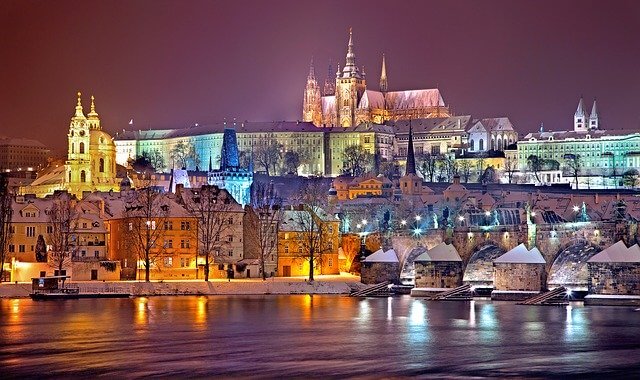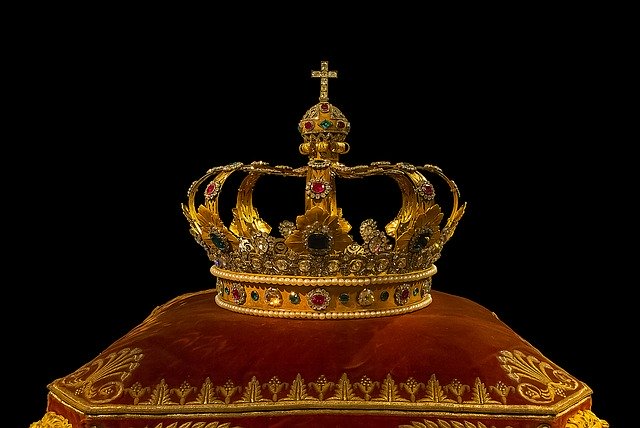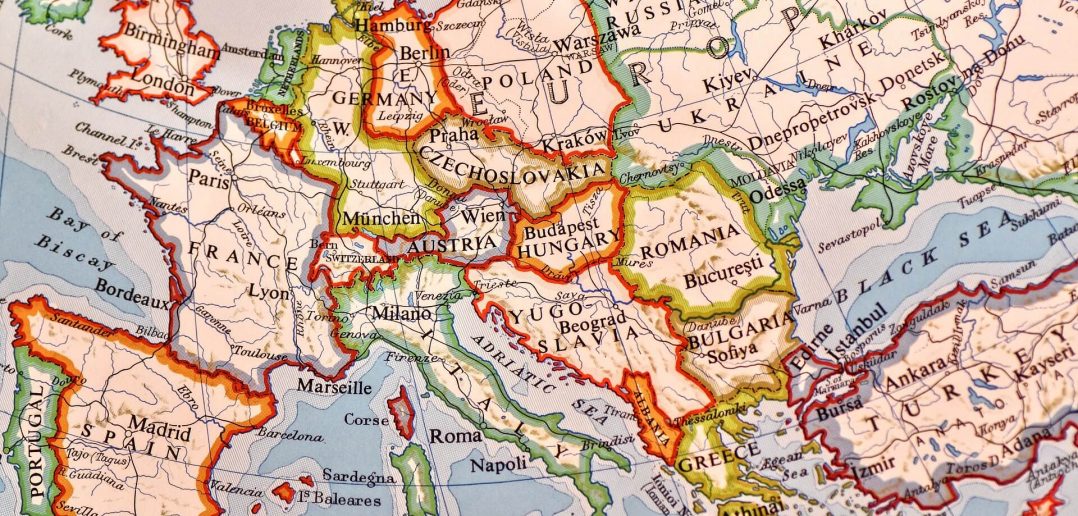Europe is one of the continents that make up what is called the Eurasian or Eurasian supercontinent (formed by Europe and Asia united).
Between 6% and 8% of the land area is located in this continent. However, it is the 2nd smallest continent in terms of size. The European continent has a great variety of languages (more than 50) among which we can highlight Russian, English, French, German, Spanish and Portuguese. It inhabits between 739 and 743 million inhabitants.
Europe is divided into 56 sovereign states. However, not all of them have international recognition. In turn, it can be divided into Eastern Europe and Western Europe. The largest of the countries in Europe is Russia and the smallest city (independent nation) is the Vatican City.

Characteristics Of Europe
1. History
The history of Europe goes back to the Middle Ages in the year 476 AD with the fall of the Roman Empire, since from there different forms of alliances existed so that each region or country united its powers with others. Thus, one of the wars that lasted most time was “the war of 100 years,” which took place during the Middle Ages and, as the name implies, lasted more than a century.
With the modern age, the wars and attempts of union did not stop. Thus a war called “the war of 30 years” took place.
From the historical point of view, Europe is the continent that has had the greatest impact on the history of other countries and continents. Thus he was a participant in discoveries (such as the discovery of America), conquests (such as the conquest of America), wars, invasions, revolutions, etc. (many times and to different destinations).
2. Limits of Europe
Europe is well defined in the North Sea (Arctic Sea), west (Atlantic Ocean) and south (Mediterranean Sea). However, east of the continent, the division between Asia and Europe is not entirely clear.
However, it is believed that the limit is marked by the Ural mountains (next to the Ural River), the Caucasus Mountains, the Caspian Sea and the Black Sea. In this way, both Turkey, Kazakhstan, Georgia, Russia and Azerbaijan would be on the border of both continents.
3. Weather
Europe is a continent with diverse weather patterns that vary depending on the region and time of year. Here are some characteristics of Europe’s weather:
- Mild temperatures: Many parts of Europe experience mild temperatures, particularly in the summer months. Average temperatures can range from the mid-60s Fahrenheit to the mid-70s Fahrenheit.
- Cold winters: Winter weather in Europe can be quite cold, particularly in the northern regions. Average temperatures can range from the low 30s Fahrenheit to the mid-40s Fahrenheit.
- Mediterranean climate: The southern regions of Europe, such as Spain, Italy, and Greece, experience a Mediterranean climate, characterized by hot summers and mild winters.
- Rainy seasons: Many parts of Europe have a rainy season, which can vary depending on the region. For example, in the UK, the rainy season is typically in the fall and winter, while in parts of southern Europe, the rainy season is typically in the winter and spring.
- Snowy regions: Some regions in Europe, particularly in the northern areas, experience snow and cold temperatures during the winter months.
Overall, Europe’s weather is varied and can be influenced by a number of factors, including proximity to water, elevation, and latitude.
4. Flora and fauna
Given that Europe has almost all its surface traversed by a temperate climate, both flora and fauna are very abundant.
As for the flora of the continent it is covered in 80% or 90% of forests.
The brown bear, the elk, the wolf, the common shrew, the red squirrel, the roe deer, the deer, the European hedgehog, the bat, the lynx and the fox are some of the species that inhabit almost the entire continent. . As for the birds, there are more than 800 species. There are more than 100,000 species of invertebrates and 75 species of amphibians.

5. Relief
Europe is a continent with diverse relief features that vary depending on the region. Here are some characteristics of Europe’s relief:
- Mountain ranges: Europe is home to several mountain ranges, including the Alps, the Pyrenees, the Carpathians, and the Apennines. These mountains offer some of the continent’s most stunning scenery and also provide habitats for a wide range of plants and animals.
- Coastal regions: Europe has a long coastline, with many coastal regions offering scenic views and popular vacation destinations. The coastline is often dotted with cliffs, beaches, and rocky coves.
- Plateaus: Several plateaus exist in Europe, including the Iberian Plateau, the Balkan Plateau, and the Crimean Plateau. These areas are typically characterized by rolling hills and open grasslands.
- Plains: There are several large plains in Europe, including the North European Plain and the Hungarian Plain. These areas are typically flat and feature extensive agricultural production.
- Islands: Europe is home to many islands, both large and small. These islands can range from rugged and remote to popular tourist destinations.
Overall, Europe’s relief is varied and can be influenced by a number of factors, including plate tectonics, climate, and geology. The continent’s relief features have played an important role in shaping its history and culture, as well as providing habitats for its diverse flora and fauna.
6. Culture
As for its culture, the gastronomy that has great prestige and world recognition stands out. Many countries are known for their “haute cuisine” dishes because they use refined and exclusive ingredients.
However, the cultural contribution that this continent has made throughout history has marked the axes and the history of other countries.
In other words, it can be said that Europe is the cradle of Western culture.
7. Economy and politics
Europe is a diverse continent with a wide range of economies and political systems. Here are some characteristics of Europe’s economy and politics:
- Mixed economies: Most countries in Europe have mixed economies, meaning they have elements of both capitalism and socialism. Many European countries have strong welfare systems and provide free or subsidized healthcare, education, and other social services.
- European Union (EU): The European Union is a political and economic union of 27 member states in Europe. It was established in the aftermath of World War II to promote economic cooperation and prevent another war in Europe. The EU has its own institutions and policies, including a single market, a customs union, and a common currency (the euro).
- Democratic systems: Most countries in Europe have democratic systems of government, with regular elections and a separation of powers between the executive, legislative, and judicial branches of government. However, some countries in Eastern Europe have transitioned to democracy more recently, and there are concerns about the strength of democracy in some countries.
- High standards of living: Many European countries have high standards of living, with access to quality healthcare, education, and social services. However, there are also significant inequalities within and between countries, and some parts of Europe experience poverty, unemployment, and social exclusion.
- Diverse industries: Europe has a diverse range of industries, including manufacturing, services, and agriculture. Some countries are known for specific industries, such as Germany’s automotive industry, Italy’s fashion industry, and France’s wine industry.
Overall, Europe’s economy and politics are complex and varied, reflecting the continent’s rich history and diversity of cultures. The EU has played a significant role in shaping Europe’s economic and political landscape, but there are also many factors that influence the individual countries’ systems and policies.
8. Religion
Being a continent with a great cultural diversity and great historical participation, it is important to mention that different types of religions inhabit. However, the percentage of Catholics is the highest, with a majority in 23 countries.
As important religions (although secondary in number of members) are the Orthodox, who are present in 10 countries, Protestants who are in 9 of the countries of Europe and Muslims, religion present in 3 of the countries of that continent.

9. Demography
This continent is characterized by having a high birth control, that is, there is a small number of births in relation to the number of people and deaths that there are. In other words, the average population is adult or elderly, having a high birth rate at birth that averages 75 and 80 years.
10. European Union
Europe is often referred to as a term similar to the European Union. However, it is important to mention that not all European countries belong to the organization of the European Union (EU). This EU is the only one in the world with legislative powers.
